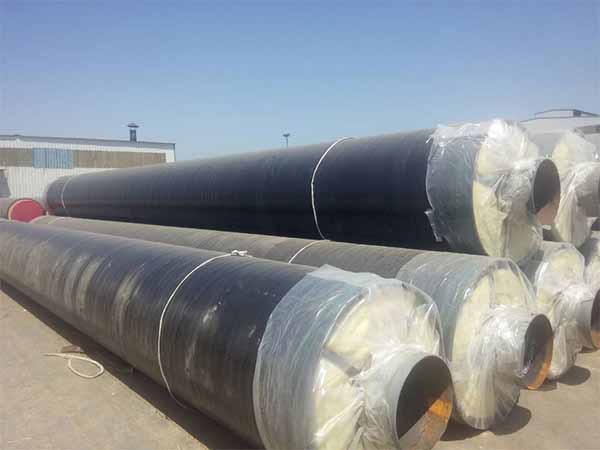In HVAC and industrial cooling systems, the
chilled water system is an important component for achieving efficient energy transmission. To ensure the stable operation of the system, choosing the appropriate pipe material is of vital importance.
So, in a chilled water system, which type of pipe material is the best choice? This article will start from a variety of commonly used pipe materials, comprehensively analyze their performance, advantages and disadvantages, as well as application scenarios, to help you make more scientific decisions.

What is a chilled water system?
The chilled water system is mainly used in large commercial buildings, industrial facilities or central air conditioning systems. The principle is to cool the air or equipment by circulating chilled water through pipes (usually at a temperature ranging from 4°C to 13°C).
As chilled water is constantly in a state of low temperature, high humidity and circulation, the pipelines need to meet the following core requirements:
Corrosion resistance
In a closed-loop system, the water temperature is usually between 5°C and 15° C. Long-term operation can easily lead to the formation of condensate water on the inner walls of the pipes. Metal materials need to resist oxidation and electrochemical corrosion. If the water quality contains chloride ions (residual disinfection) or has high hardness (calcium carbonate deposition), stainless steel or polymer materials are more reliable.
Thermal conductivity and insulation efficiency
The pipeline needs to maintain a low water delivery temperature (typical ΔT is 5°C). The lower the thermal conductivity of the material, the smaller the cold loss. The thermal conductivity of high molecular polymers (such as HDPE) (0.4 W/m·K) is significantly lower than that of copper (400 W/m·K) or stainless steel (15 W/m·K), which can reduce the thickness of the insulation layer by more than 50%.
Mechanical strength and system pressure:
The pressure resistance should be matched with the design working conditions (usually 0.6 to 1.6 MPa). Stainless steel and copper alloys have relatively high strength (tensile strength >200 MPa), while plastic pipes need to be reinforced with glass fiber (such as FRPP) to prevent creep deformation.
Fluid resistance
The roughness of the inner wall directly affects the energy consumption of the water pump. The absolute roughness of PVC-U (0.0015mm) is only 1/100 of that of galvanized steel pipe (0.15mm), which can reduce the head loss along the way by 12% to 18%, thereby reducing the power consumption of the variable frequency pump.
Common types of pipe materials for chilled water systems
The common pipes of chilled water systems mainly include carbon steel, stainless steel, copper pipes, PVC/CPVC and HDPE, etc. Below, I will introduce their characteristics and scopes respectively.
1. Carbon steel pipe
Carbon steel pipes are mainly made of a mixture of alloys and carbon, featuring a relatively high carbon content, high strength, and the ability to withstand strong pressure. Carbon steel pipes are often used for the supply and return of chilled water, and thus they are also called CHWS pipes (chilled water supply pipes) and CHWR pipes (chilled water return pipes).
Carbon steel pipes are prone to corrosion and require both internal and external anti-corrosion technologies, such as galvanization, epoxy coating or cement mortar lining.
2. Stainless steel pipe
Stainless steel pipes can also be used in chilled water systems. They have strong anti-corrosion capabilities and are suitable for high-chlorine environments, pharmaceutical or food-grade process cold water fields. However, stainless steel is relatively expensive and much more costly than carbon steel pipes and other types of pipes. Generally, it is only chosen in specific circumstances.
3. Copper tubes
Copper tubes have excellent heat conduction performance, are relatively light in weight, easy to install and suitable for cold energy transmission. Compared with galvanized steel pipes, copper pipes are more prone to corrosion. When the flow rate of water in copper pipes exceeds three meters per second, corrosion is likely to occur. It is necessary to use them flexibly according to the situation.
4.PVC/CPVC pipes
It features low price, light weight, easy installation and there is no need to worry about corrosion. However, its pressure resistance is relatively weak and it is not suitable for high-temperature or high-pressure environments. It is applicable to small buildings or temporary chilled water transportation.
The key factors for choosing chilled water pipes
System pressure and temperature: High-pressure systems are more suitable for carbon steel or stainless steel pipes.
Corrosion resistance: Stainless steel or carbon steel with anti-corrosion coating is recommended for humid environments.
Installation conditions and maintenance: Lightweight materials (such as PVC or HDPE) are convenient for construction, but their maintenance is complex.
Service life and economy: Stainless steel has a long service life but a high cost. Carbon steel offers better value for money.
Project types: Commercial, industrial or residential projects have significant differences in material requirements.
Summary
At present, carbon steel pipes remain the most widely used and cost-effective choice in chilled water systems. After undergoing inner wall anti-corrosion treatment, their corrosion resistance and service life can both meet the long-term operation requirements.
